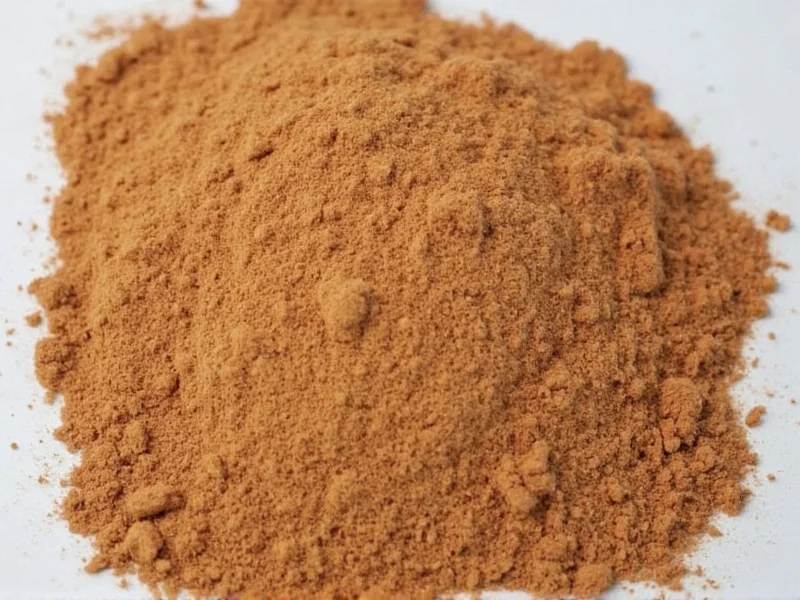File powder holds a special place in Louisiana cooking traditions, bringing both thickening power and distinctive flavor to classic gumbo recipes. This guide explores the proper use of file powder, its history, and provides an authentic recipe that showcases this unique ingredient.
What Is File Powder and Its Culinary History
File powder, pronounced "fee-lay," originates from the Choctaw word "kombo," meaning file. Native Americans first used sassafras leaves as a thickener before European settlers arrived in Louisiana. When French and African culinary traditions merged with indigenous practices, file powder became a signature element of Creole and Cajun cooking.
Sassafras trees grow throughout the southeastern United States, and their dried, ground leaves create the distinctive file powder. Unlike artificial thickeners, file provides both texture and a subtle, earthy flavor with hints of citrus and root beer. Authentic file powder contains only sassafras leaves—no additives or fillers.
File Powder vs. Other Gumbo Thickeners
Gumbo traditionally uses three thickening methods: roux, okra, and file powder. Each brings different characteristics to the dish. Understanding these differences helps you choose the right technique for your culinary goals.
| Thickener | Preparation Method | Flavor Profile | Texture Result | Best Used With |
|---|---|---|---|---|
| File Powder | Added at end of cooking | Earthy, subtle citrus notes | Silky, slightly viscous | Seafood gumbo, chicken gumbo |
| Roux | Cooked before adding liquids | Nutty, toasty, complex | Rich, smooth base | Andouille sausage gumbo, duck gumbo |
| Okra | Cooked with vegetables | Grassy, vegetal | Naturally viscous | Summer gumbo, vegetarian gumbo |
Proper Technique for Using File Powder
Many home cooks make critical mistakes when using file powder that compromise their gumbo's texture. Follow these guidelines for perfect results every time:
- Never add file powder during cooking - Always stir it in after removing the pot from heat
- Mix with a spoonful of hot broth first - Create a slurry to prevent clumping
- Use 1-2 teaspoons per serving - Start with less; you can always add more
- Never boil after adding file - This causes stringy, unpleasant texture
- Let it rest 5 minutes - Allows thickening to develop properly
File powder's magic happens through mucilage, a natural thickening agent in sassafras leaves. When exposed to high heat for extended periods, this mucilage breaks down and creates undesirable stringiness. The distinctive flavor also diminishes with prolonged cooking.
Classic Chicken and Andouille Gumbo Recipe with File Powder
This authentic recipe showcases file powder's proper usage while delivering deep, complex flavors characteristic of Louisiana cooking. The recipe serves 6-8 and takes approximately 3 hours from start to finish.
Ingredients
- 1 cup all-purpose flour
- 1 cup vegetable oil
- 1 large onion, diced
- 1 green bell pepper, diced
- 3 celery stalks, diced
- 4 cloves garlic, minced
- 1 pound andouille sausage, sliced
- 1.5 pounds chicken thighs, bone-in
- 6 cups chicken stock
- 2 bay leaves
- 1 tablespoon thyme
- 2 teaspoons cayenne pepper (adjust to taste)
- Salt and black pepper to taste
- 3-4 tablespoons file powder
- Chopped green onions for garnish
Preparation Steps
- Create a dark roux by cooking flour and oil over medium heat for 30-40 minutes, stirring constantly until chocolate brown
- Add onions, bell peppers, and celery (the "holy trinity") and cook until softened
- Stir in garlic, sausage, and chicken thighs
- Pour in chicken stock, add bay leaves, thyme, and cayenne
- Simmer covered for 2 hours, skimming fat periodically
- Remove chicken bones and shred meat, returning to pot
- Remove pot from heat and let cool slightly (to about 180°F)
- Mix 3 tablespoons file powder with 1/4 cup hot broth to create slurry
- Stir slurry into gumbo and let rest 5 minutes before serving
Common File Powder Mistakes to Avoid
Even experienced cooks sometimes mishandle file powder. These frequent errors can ruin an otherwise perfect gumbo:
- Adding file while boiling - Causes stringy texture that cannot be fixed
- Using too much file - Over-thickens and creates overpowering flavor
- Substituting with sassafras tea - Contains different compounds and won't thicken properly
- Storing improperly - Loses potency when exposed to air and light
- Confusing with filé powder spelling - Same product, but inconsistent spelling causes confusion
Storage and Shelf Life of File Powder
Proper storage maintains file powder's thickening ability and distinctive flavor. Keep these guidelines in mind:
- Store in an airtight container away from light and moisture
- Use within 6-12 months for optimal flavor and thickening power
- Check for freshness by aroma—should have earthy, pleasant scent
- Never store in refrigerator where moisture can degrade quality
- Consider freezing in vacuum-sealed container for extended shelf life
Over time, file powder loses its mucilage content, reducing its thickening ability while the flavor becomes more muted. Fresh file should have a vibrant green color that darkens with age.
Authenticity in Gumbo Preparation
True Louisiana gumbo respects certain traditions that distinguish authentic preparations from imitations. When using file powder, consider these cultural aspects:
- File gumbo traditionally follows seafood or chicken preparations, never used with okra in the same pot
- Many Louisiana families keep file powder in shakers at the table for individual adjustment
- The "holy trinity" (onion, celery, bell pepper) forms the flavor base, never substituted
- Authentic recipes never use tomatoes in file-based gumbos (common in Creole tomato-based gumbos)
- Proper seasoning develops over long, slow cooking—not added at the end
Understanding these traditions helps create gumbo that honors its cultural roots while delivering exceptional flavor and texture. The proper use of file powder represents respect for Louisiana's culinary heritage.











 浙公网安备
33010002000092号
浙公网安备
33010002000092号 浙B2-20120091-4
浙B2-20120091-4